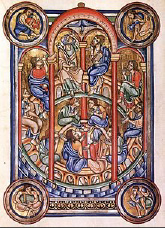Once an earnest young man approached the Zen master and said, “Tell me what God is like.”
“Do you see the sun?” the Master began.
The young man raised his eyes towards the sky, but the Master said, “No, do not look at the sun or you will damage your eyes. Instead, hold out your arm and roll up your sleeve.” The young man did as he was directed.
“Do you feel the sun?” asked the Master.
“I do,” nodded the young man, somewhat mystified.
The Master left him.
The Cloud of Unknowing is a fourteenth century book by an unknown English author.
In the book the descriptive phrase is used, “the work of love”, as the individual’s search for their God.
The author writes “For silence is not God, nor speaking; fasting is not God, nor eating; solitude is not God, nor company; nor any other pair of opposites. God is hidden between them and cannot be found by anything your soul does, but only by the love of your heart. God cannot be known by reason, nor by thought, caught, or sought by understanding. But God can be love and chosen by the true, loving will of your heart.”
Maybe, Trinity Sunday is a reminder to us to find God, “hidden between them”!
The author of the First Letter of St. John writes bluntly, “God is love, and those who abide in love abide in God, and God abides in them.” (1Jn 4: 16).
In A.A. Milnes’s book called “Winnie the Pooh, Piglet asks, “how do you spell love?”, to which Pooh replies, “You don’t spell it, you feel it!”
Trinity Sunday is a day to forget the ‘spelling’ and enjoy the ‘feeling’!


